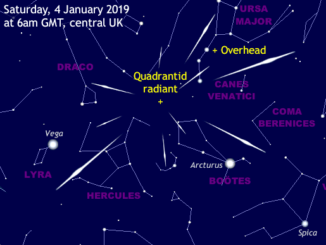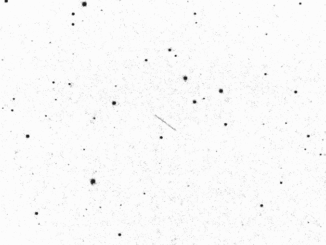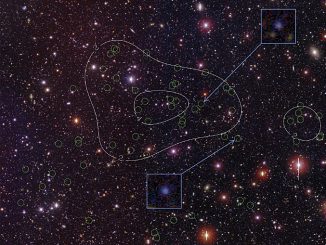
Don’t miss the Quadrantid meteor shower peak at UK dawn on 4 January 2020
For an early astronomical treat to usher in the New Year, seek out the natural pyrotechnics of the rich Quadrantid meteor shower. Peak shooting star activity occurs within a four-hour window centred on a prediction of 8am GMT on 4 January 2020 – a time that favours UK skywatchers at astronomical dawn, or North American observers around local midnight.









